-
 Bitcoin
Bitcoin $117300
1.99% -
 Ethereum
Ethereum $3884
5.89% -
 XRP
XRP $3.268
9.33% -
 Tether USDt
Tether USDt $1.000
0.02% -
 BNB
BNB $783.0
1.78% -
 Solana
Solana $173.6
3.51% -
 USDC
USDC $0.9999
0.00% -
 Dogecoin
Dogecoin $0.2193
7.00% -
 TRON
TRON $0.3380
0.30% -
 Cardano
Cardano $0.7769
5.08% -
 Stellar
Stellar $0.4350
9.36% -
 Hyperliquid
Hyperliquid $40.23
5.78% -
 Sui
Sui $3.739
6.95% -
 Chainlink
Chainlink $18.30
9.46% -
 Bitcoin Cash
Bitcoin Cash $581.7
2.11% -
 Hedera
Hedera $0.2577
5.51% -
 Ethena USDe
Ethena USDe $1.001
0.00% -
 Avalanche
Avalanche $23.08
4.23% -
 Litecoin
Litecoin $121.7
2.24% -
 UNUS SED LEO
UNUS SED LEO $8.962
-0.34% -
 Toncoin
Toncoin $3.332
1.36% -
 Shiba Inu
Shiba Inu $0.00001273
3.39% -
 Uniswap
Uniswap $10.35
6.84% -
 Polkadot
Polkadot $3.818
4.01% -
 Dai
Dai $1.000
0.01% -
 Bitget Token
Bitget Token $4.446
2.13% -
 Cronos
Cronos $0.1491
4.96% -
 Monero
Monero $255.4
-9.78% -
 Pepe
Pepe $0.00001099
4.80% -
 Aave
Aave $284.0
8.01%
What is shilling in the NFT space?
Shilling in the NFT space involves aggressive promotion to inflate value, often using fake hype, bots, or undisclosed paid endorsements to manipulate buyers.
Aug 08, 2025 at 02:14 am
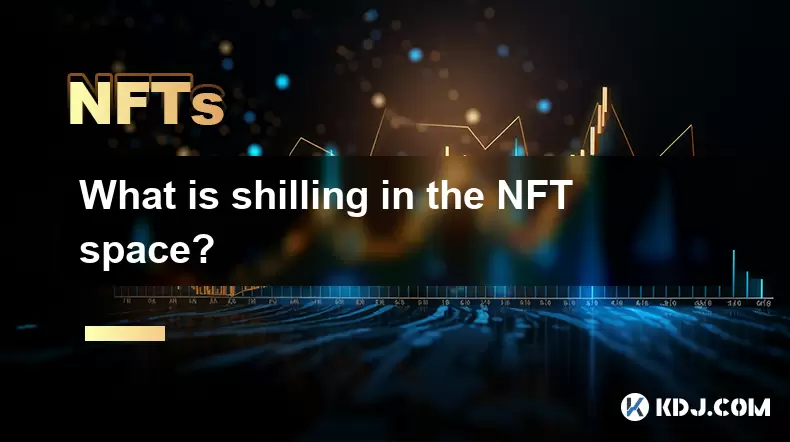
Understanding the Concept of Shilling in the NFT Ecosystem
In the NFT space, the term shilling refers to the act of aggressively promoting a specific digital asset, collection, or project—often with the intent to inflate its perceived value or drive up demand. This promotion can occur across social media platforms, Discord servers, Telegram groups, or even during live streams. While not inherently illegal, shilling becomes problematic when it involves misleading information, undisclosed financial interests, or coordinated efforts to manipulate the market. Participants engaging in shilling may own large quantities of a particular NFT and seek to profit by encouraging others to buy in, thereby increasing prices.
It is crucial to distinguish between genuine enthusiasm and manipulative shilling. A creator sharing their new NFT drop with their community is not shilling if they are transparent. However, when individuals or groups use fake accounts, bots, or paid influencers to generate artificial hype, the line is crossed into unethical territory. This behavior can mislead new or inexperienced collectors, leading them to make decisions based on false premises.
Common Tactics Used in NFT Shilling Campaigns
Shilling in the NFT world often follows a predictable pattern involving several manipulative tactics. One common method is pump-and-dump coordination, where a group accumulates a low-volume NFT collection, promotes it heavily, and sells their holdings at the peak of the artificial demand. Another tactic involves celebrity or influencer endorsements without proper disclosure of compensation. When influencers are paid to promote a project but fail to state this, it violates ethical guidelines and can deceive followers.
Some shilling campaigns use fake engagement metrics, such as inflated Discord member counts, retweets, or likes generated by bots. This creates the illusion of popularity and legitimacy. Another deceptive practice is wash trading, where an individual or group buys and sells NFTs to themselves across different wallets to simulate trading volume and activity. This can mislead observers into believing a collection is in high demand when, in reality, it is stagnant.
How to Identify Shilling Behavior in NFT Communities
Recognizing shilling requires vigilance and critical thinking. One red flag is repetitive messaging across multiple accounts using identical phrases or hashtags. For example, seeing dozens of new Twitter accounts all tweeting “This NFT will 100x!” within minutes of each other suggests coordinated shilling. Another indicator is over-the-top promises such as guaranteed returns, claims of celebrity backing without proof, or assertions that an NFT is “the next Bored Ape.”
Examining the trading history and ownership distribution of an NFT collection can also reveal shilling. If a small number of wallets hold a majority of the supply or if recent sales show rapid price spikes with no fundamental changes, manipulation may be occurring. Tools like OpenSea analytics, Blur.io, or NFTGo allow users to view wallet concentrations and transaction patterns. Additionally, anonymous team members, lack of a clear roadmap, or plagiarized artwork are warning signs often associated with shilled projects.
Steps to Protect Yourself from NFT Shilling Schemes
To safeguard against manipulative shilling, adopt a structured approach to evaluating NFT opportunities. Begin by researching the project team—look for doxxed (publicly identified) members with verifiable track records in tech or art. Visit the project’s official website and read the whitepaper or collection description thoroughly. Check for consistent updates and community engagement beyond promotional posts.
Next, analyze the on-chain data:
- Use blockchain explorers like Etherscan to verify wallet addresses involved in trades.
- Look up the NFT contract address on OpenSea and review the ownership distribution.
- Monitor the floor price trends over time, not just recent spikes.
- Avoid collections where the top holders own more than 20% of the total supply.
Engage with the community cautiously:
- Join the official Discord but observe before participating.
- Ask questions about utility, long-term plans, and tokenomics.
- Be skeptical of members who aggressively push buys or dismiss concerns.
Never make decisions based on FOMO (fear of missing out). Wait for multiple data points and independent reviews before investing.
Legal and Ethical Implications of NFT Shilling
While the decentralized nature of NFTs makes regulation challenging, certain shilling practices may violate securities laws or advertising standards. In jurisdictions like the United States, the SEC has indicated that some NFTs could be classified as unregistered securities, especially if marketed with profit expectations. Promoting such assets without proper disclosures may lead to legal consequences.
The Federal Trade Commission (FTC) requires influencers to disclose material connections when endorsing products. Failure to tag a paid promotion with #ad or #sponsored when shilling an NFT can result in penalties. Platforms like Twitter and Instagram have also implemented policies against coordinated inauthentic behavior, which includes bot-driven shilling.
From an ethical standpoint, shilling erodes trust in the NFT ecosystem. It discourages genuine creators and harms retail investors who lack the tools to detect manipulation. Transparency, honesty, and accountability are essential for sustainable growth in the space.
Reporting and Responding to Suspected Shilling
If you encounter suspicious shilling activity, you can take several actions. On social media platforms, report fake accounts or spam posts using built-in reporting tools. For coordinated manipulation on Discord, notify server moderators or admins with evidence such as screenshots and wallet addresses. Some NFT marketplaces allow users to flag listings suspected of wash trading.
You can also contribute to community awareness by sharing findings in trusted forums like Reddit’s r/NFT, r/CryptoArt, or dedicated NFT research Twitter accounts. Always present data objectively—include links to transaction records or ownership charts. Avoid making unverified accusations, but highlight patterns that warrant scrutiny.
For severe cases involving fraud or scams, consider filing a report with relevant authorities such as the FTC (in the U.S.) or local financial regulators. While enforcement may be slow, documentation helps build a case for future action.
Frequently Asked Questions
Is it illegal to shill an NFT I own?
Owning an NFT and talking about it is not illegal. However, if you fail to disclose your financial interest while promoting it to a large audience—especially as an influencer—it may violate advertising regulations. Making false claims about future value or utility can also lead to legal issues.
Can shilling happen in private NFT groups?
Yes. Private Discord servers or Telegram groups are common venues for shilling. Members may pressure others to buy or spread rumors about upcoming partnerships. Always verify claims independently, even in closed communities.
How do bots contribute to NFT shilling?
Bots can artificially inflate social metrics by liking, retweeting, or posting identical messages across accounts. They create false impressions of popularity. Some bots also execute rapid trades to simulate volume. Monitoring account creation dates and posting patterns can help identify bot activity.
Does shilling only involve price manipulation?
No. Shilling can also involve misrepresenting a project’s team, roadmap, or rarity traits. For example, claiming an NFT has gaming utility when none exists, or falsely stating that a well-known artist is involved, qualifies as shilling even if no direct price pump is attempted.
Disclaimer:info@kdj.com
The information provided is not trading advice. kdj.com does not assume any responsibility for any investments made based on the information provided in this article. Cryptocurrencies are highly volatile and it is highly recommended that you invest with caution after thorough research!
If you believe that the content used on this website infringes your copyright, please contact us immediately (info@kdj.com) and we will delete it promptly.
- Cold Wallet Crypto in 2025: The Future is Now, Ya'll
- 2025-08-08 05:10:13
- MAGACOIN, SOL, and ADA: A Tale of Shifting Tides in Crypto
- 2025-08-08 05:10:13
- SHIB Price, PEPE, and the Memecoin Supercycle: Who Will Reign Supreme?
- 2025-08-08 05:50:12
- Pudgy Penguins Price Prediction: Google Trends & Breakout Signals
- 2025-08-08 05:50:12
- UAE Crypto Regulation: SCA and VARA Unite to Streamline the Future of Digital Assets
- 2025-08-08 05:55:48
- MAGACOIN Finance: The Presale Phenomenon Rocking the Crypto World
- 2025-08-08 05:55:48
Related knowledge

What is shilling in the NFT space?
Aug 08,2025 at 02:14am
Understanding the Concept of Shilling in the NFT EcosystemIn the NFT space, the term shilling refers to the act of aggressively promoting a specific d...
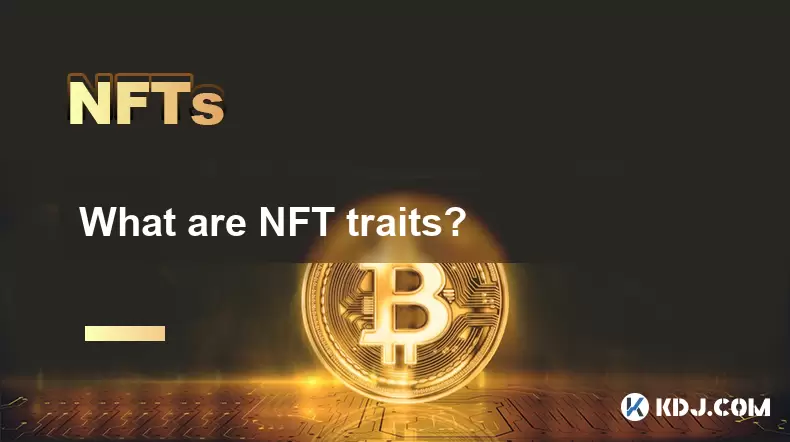
What are NFT traits?
Aug 07,2025 at 10:35pm
Understanding the Concept of NFT TraitsNFT traits define the unique characteristics of a non-fungible token, particularly within collections such as p...
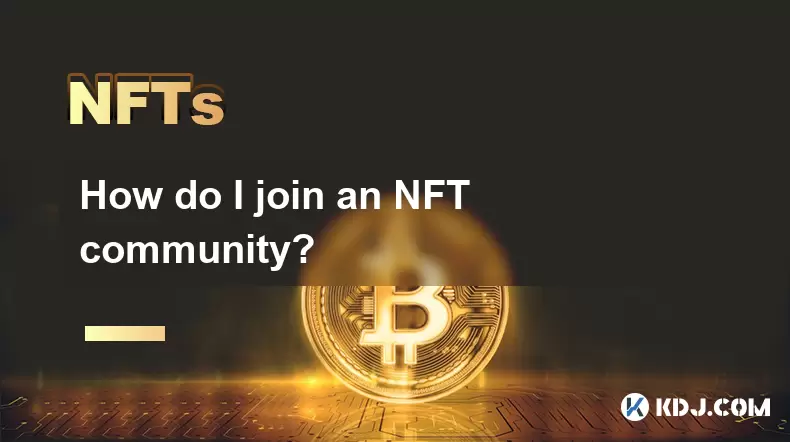
How do I join an NFT community?
Aug 07,2025 at 10:21pm
Understanding the Purpose of NFT CommunitiesNFT communities are digital ecosystems built around specific non-fungible token projects, artists, or broa...
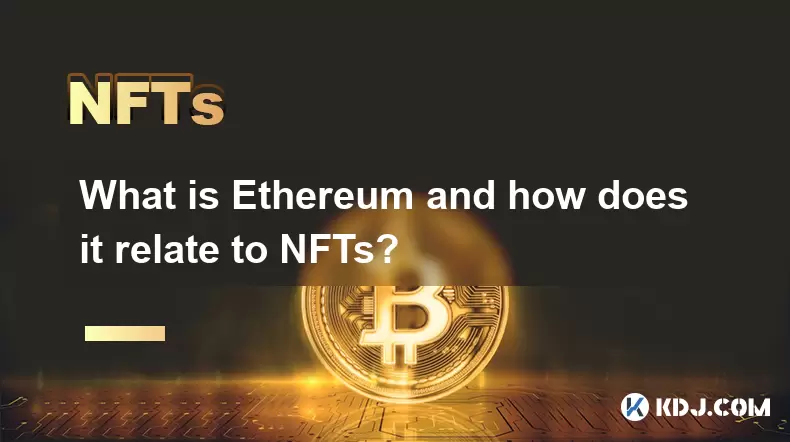
What is Ethereum and how does it relate to NFTs?
Aug 08,2025 at 12:29am
Understanding Ethereum: A Decentralized Platform for Smart ContractsEthereum is a decentralized, open-source blockchain platform that enables develope...
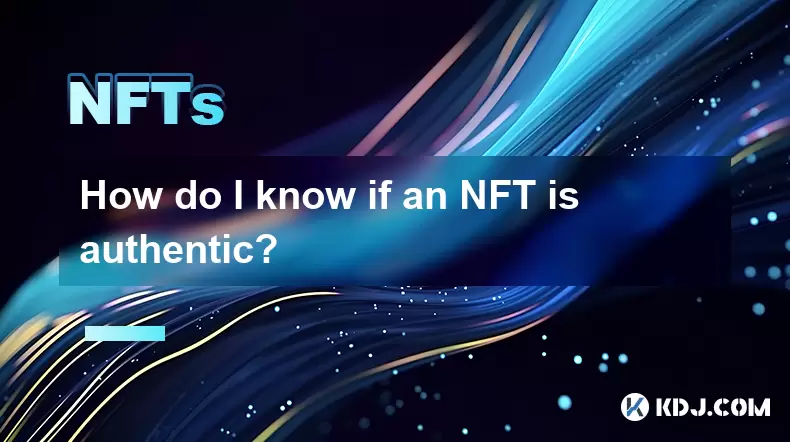
How do I know if an NFT is authentic?
Aug 07,2025 at 10:14pm
Understanding NFT Authenticity and Blockchain VerificationWhen assessing whether an NFT is authentic, the foundation lies in understanding how blockch...
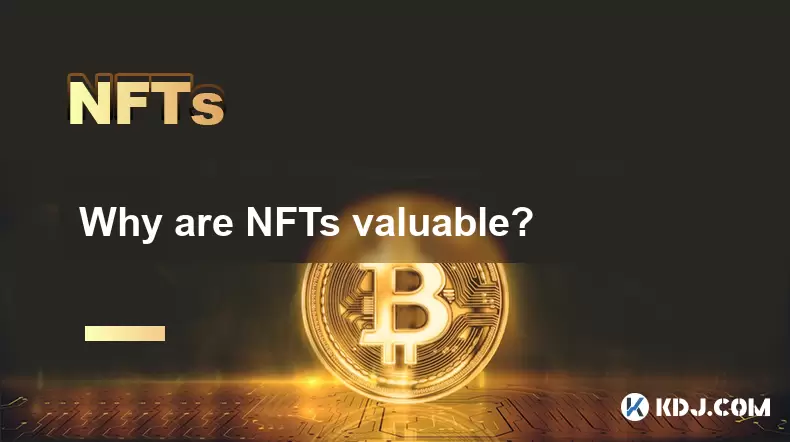
Why are NFTs valuable?
Aug 08,2025 at 12:15am
Understanding the Concept of NFTsNFTs, or Non-Fungible Tokens, are unique digital assets verified using blockchain technology. Unlike cryptocurrencies...

What is shilling in the NFT space?
Aug 08,2025 at 02:14am
Understanding the Concept of Shilling in the NFT EcosystemIn the NFT space, the term shilling refers to the act of aggressively promoting a specific d...

What are NFT traits?
Aug 07,2025 at 10:35pm
Understanding the Concept of NFT TraitsNFT traits define the unique characteristics of a non-fungible token, particularly within collections such as p...

How do I join an NFT community?
Aug 07,2025 at 10:21pm
Understanding the Purpose of NFT CommunitiesNFT communities are digital ecosystems built around specific non-fungible token projects, artists, or broa...

What is Ethereum and how does it relate to NFTs?
Aug 08,2025 at 12:29am
Understanding Ethereum: A Decentralized Platform for Smart ContractsEthereum is a decentralized, open-source blockchain platform that enables develope...

How do I know if an NFT is authentic?
Aug 07,2025 at 10:14pm
Understanding NFT Authenticity and Blockchain VerificationWhen assessing whether an NFT is authentic, the foundation lies in understanding how blockch...

Why are NFTs valuable?
Aug 08,2025 at 12:15am
Understanding the Concept of NFTsNFTs, or Non-Fungible Tokens, are unique digital assets verified using blockchain technology. Unlike cryptocurrencies...
See all articles

























































































